A History and Review of Rural Gaming
Many of our collections tend to focus on the working lives of rural communities. Yet people in the countryside have always appreciated the benefits of gaming, whether it’s to compete, relax or have fun. In more recent years, board games and video games have brought small capsules of the countryside into the gaming world of the wider population. But how do these games throughout history stack up against each other? Join us for hard-hitting reviews of rural games, past and present. For cross generational input, my mum also offered her brutally honest opinions.
Cribbage
The card game Cribbage has been consistently popular since its invention by the 17th century poet Sir John Suckling. Its origins are likely even older, taking inspiration from the 16th century game of ‘Noddy’. The use of a board for scoring perhaps indicates that it was not just a game for high society, as the illiterate working classes could enjoy it just as much as other groups. Its intrinsic link with English rural tradition is demonstrated by its association with pub culture; to this day it remains the only game which can be legally played in pubs with money at stake. Nowadays, there are over a million British players in competitive leagues.

The game, ideally played with two players, consists of two stages. Firstly, a blackjack-style round takes place, in which both players are dealt six cards and must discard two into a pile called the ‘crib’. The players then take it in turn to lay down cards, but the total values cannot exceed 31. They gain points for completing objectives; for example, if their card takes the total to exactly 15, they score two points. If three of a kind are played in a row, the player to lay the third card receives six points. A further round follows which is more similar to poker, in which certain combinations of cards yield more points than others. The ‘crib’ comes into play in this round.
One particularly distinctive feature of cribbage is the board, in which pegs are placed to mark the scores of each player. Because of this, it is thought that the saying ‘level pegging’ derives from a scenario in cribbage in which two players are tied on points.

Although the game’s rules make it a little more difficult to pick up and play than a simpler card game like Whist, it is relatively easy to get into once you start playing it. Cribbage rewards skill, patience and foresight. For example, baiting your opponent into making a pair can allow you to respond with three of a kind, netting you more points. Learning these strategies and putting them into place is highly satisfying, and it’s no surprise that the appeal of cribbage has remained throughout the centuries.
Rating: 7/10
What my mum thought: It’s alright. Better than Snap!
Trap Ball
Trap ball is a very old game, dating to the 14th century, and was probably the predecessor to cricket. Myths around the first ever games of trap-ball suggest shepherds would throw stones at wicket gates to pass the time, demonstrating the game’s strong link to the countryside. Although it seemed to flourish in the 17th and 18th centuries, it had almost died out by the end of Queen Victoria’s reign. A small revival took place in Kent, where a group of pubs formed the Canterbury & District Bat and Trap league, which is still going strong.
Straddling the line between a game and a sport, trap-ball involves a small wooden ‘slipper’ which shoots a ball into the air when triggered. A batsman then hits the ball as far and hard as they can. Any further rules of the game are up to the discrepancy of the players. One variant involves hitting the ball between posts with fielders trying to take a catch. Another allows fielders to throw the ball from where it lands, attempting to hit a wicket and take the batsman’s place.
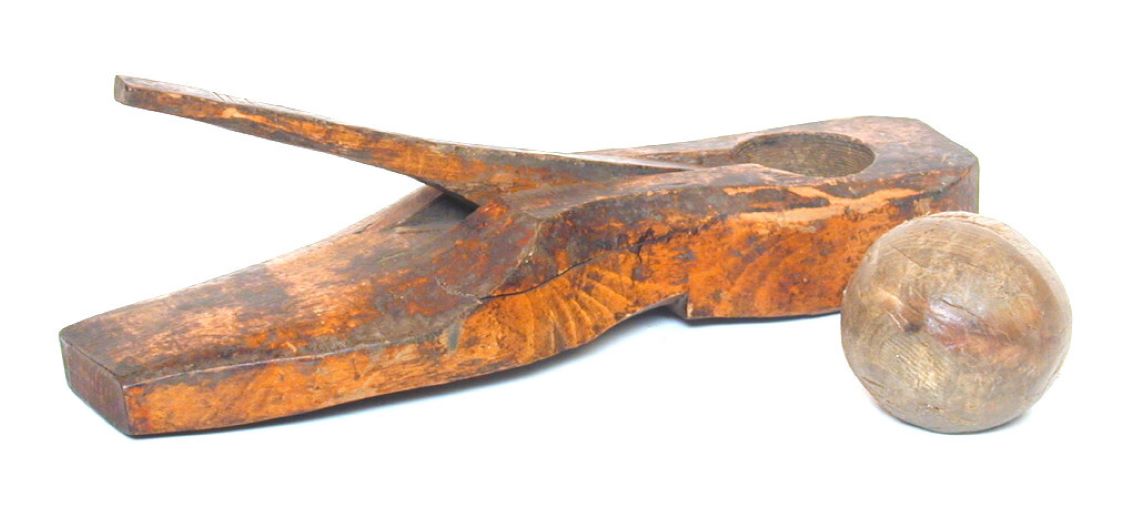
Though it does have a unique charm, it’s no surprise that trap ball has been surpassed by cricket as Britain’s bat sport of choice. Although I pulled about thirty muscles last time I tried to bowl, some people are very good at it, and trap-ball’s lack of a proper bowler is a disadvantage. Cricket is also more accessible – anyone with a few sticks and ball can play it, whereas trap-ball requires the ‘slipper’ pictured above. I would recommend trap ball as a form of solo stress relief rather than a game with multiple players. At the very least, it provides more exercise than anything else on this list, and we begrudgingly admit that’s a good thing.
Rating: 5/10
What my mum thought: Why is it called Trap Ball? As far as I can see, the ball doesn’t get trapped anywhere.
The Archers board game
First sold in the 1960s, the Archers board game is less about the plot of the radio show and more about the fundamentals of livestock farming. As such, it is approachable even to people like me who can’t tell their Aldridges from their Grundys.
Each player owns a farm, and the objective of the game is to acquire all the animals the farm needs. If you get all the animals on your farm card, plus a tractor, you are crowned the most successful farmer in Borchester. As you move around the board, the game does a good idea of introducing players to concepts like agricultural shows and development grants, without making them core gameplay mechanics.
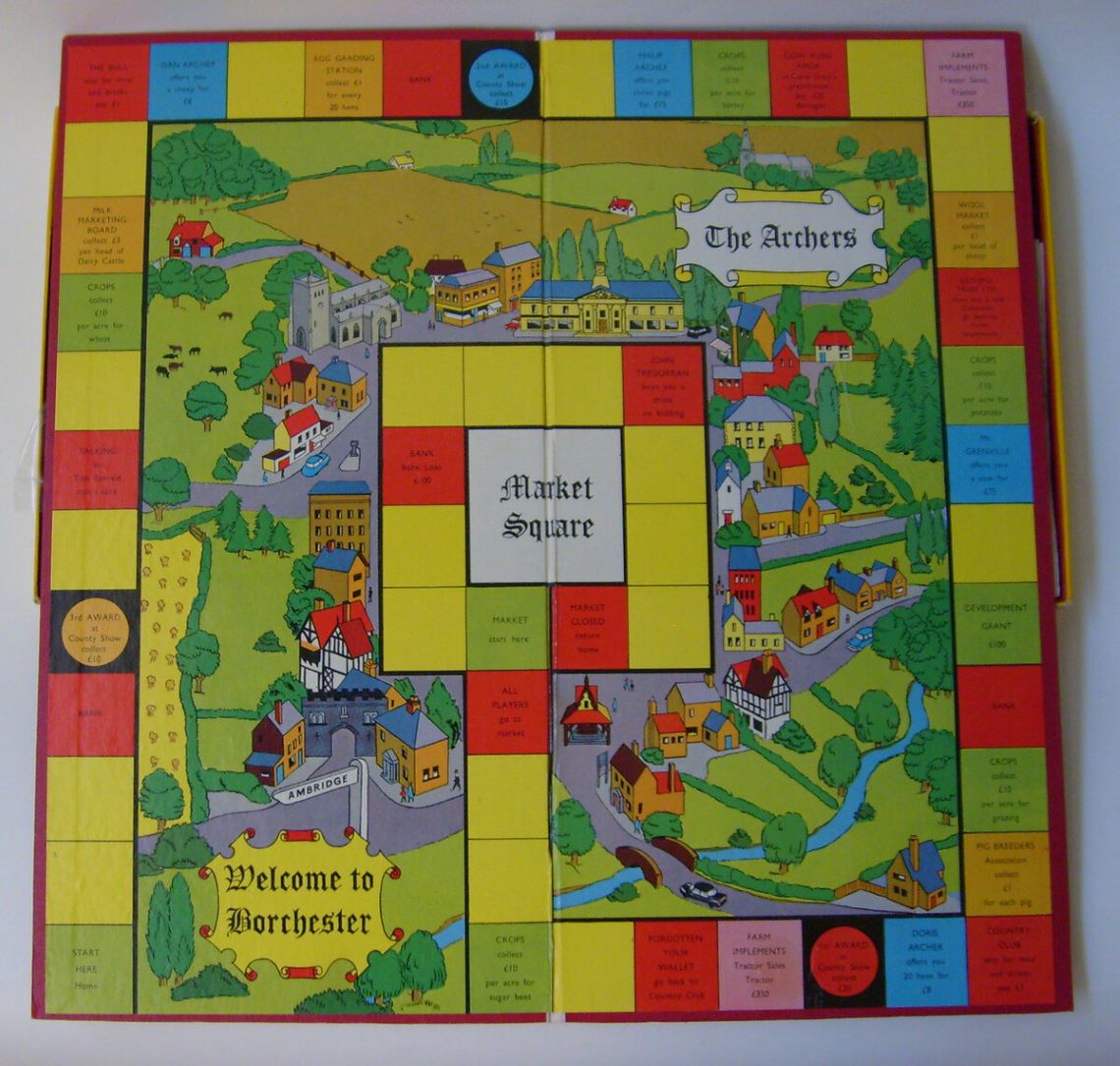
The highlight of the playing experience is undoubtedly the farmers’ market, where players bid against each other for a series of livestock. This is by far the most strategic part of the game. Should you bid five times the market price for a prize sheep, knowing you’ll need four of them to win the game? Is grandma hoarding all the chickens purely out of spite? Is it a good idea to take a loan from the bank to buy a nice rectangular cow? These auctions are completed by a small wooden gavel; inevitably arguments will break out over who gets to bang it.
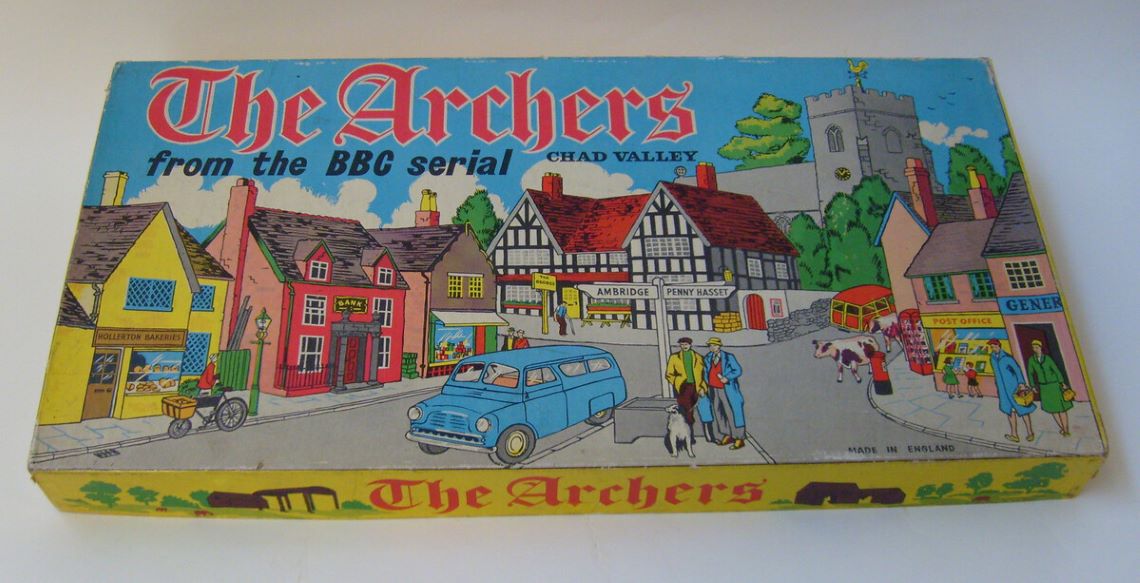
As aforementioned, knowledge of the show is not essential to play – although having at least one Archers lore expert around the board does improve the experience. Anecdotes like “I shouldn’t be getting money for potatoes – Brookfield doesn’t do potatoes any more” are always appreciated. The game does not replicate the drama of the show, aside from one ‘Cows run amok’ square which raised a smile amongst my players. Would this board game for all the family be improved by a bit of theft and adultery? Perhaps not.
I didn’t find the game to be uncomfortably long; three or four circuits of the playing board were sufficient, and so we were finished much quicker than other classics like Monopoly and Risk.
All being said, I found the Archers game to be an approachable, engaging and enjoyable experience.
Rating: 8/10
What my mum thought: Good fun! I enjoyed filling out my farm card. A good game to play with children as well as adults.
Grade Up to Elite Cow
Produced by the British Friesian Cattle Society in 1986, Grade Up to Elite Cow seeks to educate its players on the process of improving the quality of their herd via selective breeding, through various categories until they reach Elite Cow status.
The game instructions begin with a lengthy piece of text about how this practice works in reality. Whilst this is interesting information and provides context, it is not all relevant to the game and can appear a bit intimidating to those with no prior knowledge of cow breeding. For example, a paragraph is dedicated to the Register of Merit, which is not featured in the game at all. Therefore, Grade Up would probably be more interesting to those with an interest in dairy farming.
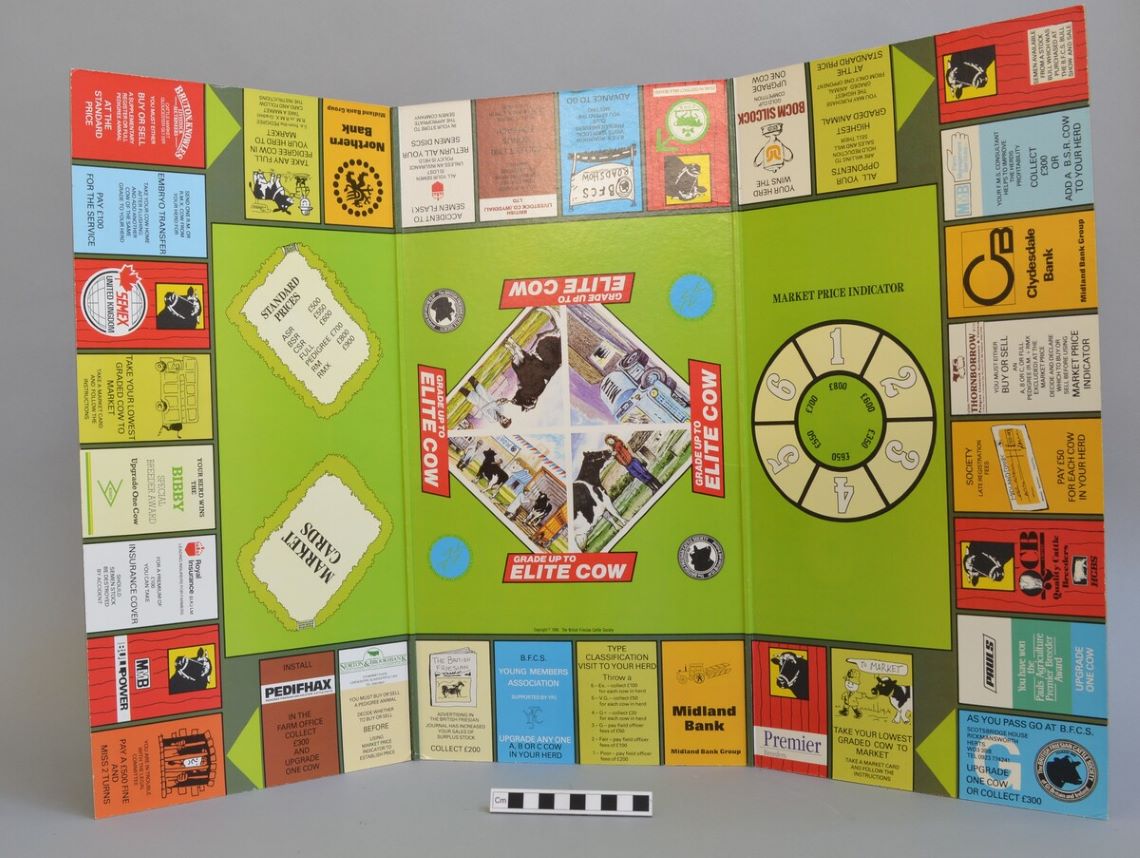
The purpose of Grade Up is to elevate your herd to Elite status by purchasing bull semen from different sources around the board and grading up to a higher pedigree over the course of several generations. However, the game board has its issues. Many of the squares contain too much writing, which can be small and difficult to read. Some of the squares feel overly harsh, such as one which forces a huge fine on players and makes them miss two turns. Sitting around doing nothing is never fun, and it is honestly poor game design to force this on a player.
Progression in the game is entirely dependent on landing on the squares on which you can purchase semen, and also the squares in which you can grade up your cows. Therefore, performing well is too dependent on luck. Lower graded cows can also seem unimportant, and I feel they were only included so the game could demonstrate how many grades of cow there are.
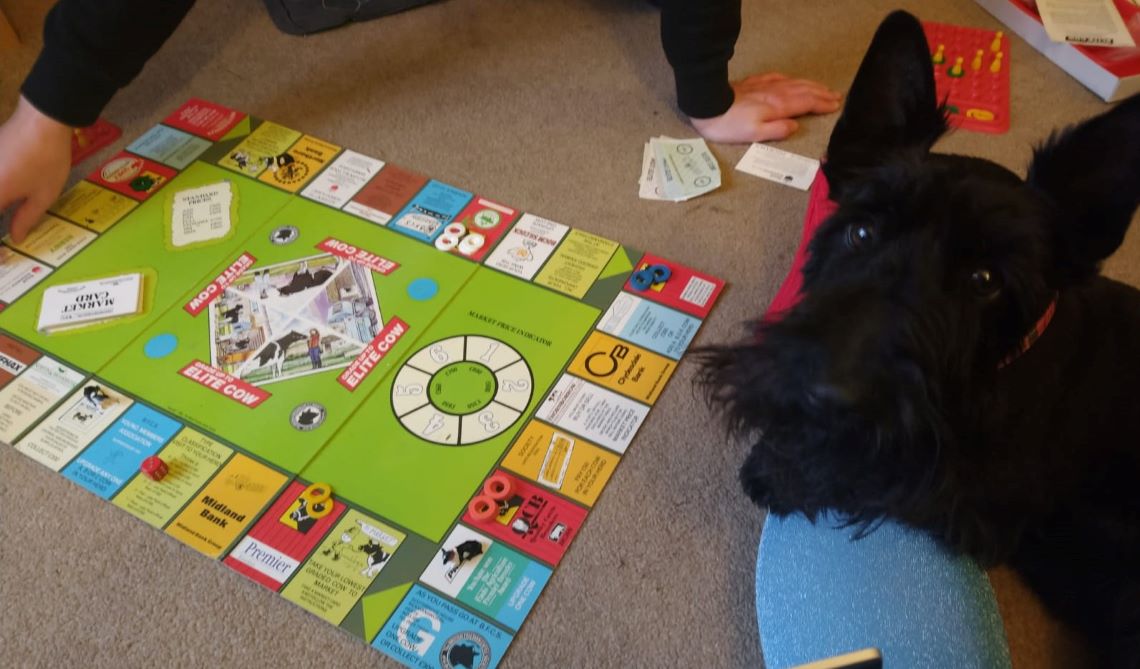
Despite this, Grade Up does produce some genuinely good laughs and memorable moments. At one point, two of my players nearly came to blows when one tried to forcibly purchase a high grade cow from another. I also felt genuine emotion when one of my cows had to be culled after breaking a leg. The horror of seeing your semen flasks shatter is a feeling I wouldn’t wish on my worst enemy. The basic concept of having to grade up your herd by using different types of semen is also an ideal way to represent the importance of gene diversification.
Plus, it’s named ‘Grade Up to Elite Cow’, and deserves a bonus point just for that.
Rating: 6/10
What my mum thought: This is quite inappropriate. It’s like Battleships, but with semen.
Farming Simulator 22
“But don’t think it’s a game… the farm has a way of sorting the wheat from the chaff.”
Upon being greeted by this oddly threatening line in Farming Simulator’s opening cutscene, you could be forgiven for thinking there are some brutal times ahead. Loading into the game for the first time does little to diminish this thought, as you are dropped into the middle of a rural village with no land, no equipment, and no idea what to do. In fact, it was only after wandering around for several minutes that I realised that you only receive a tutorial if you start the game on its easiest mode. Starting in this mode is therefore essential for new players, which is unusual for modern video games.
Even with this tutorial the vast world of Farming Simulator can seem daunting and is generally poorly explained. In my first couple of hours of playtime I had to look up more guides online than I did for Dark Souls. If you’re familiar with that game, you’ll understand just how much of a struggle I had. I really think I nailed the character creator though – can’t go wrong with a sturdy pair of wellies.
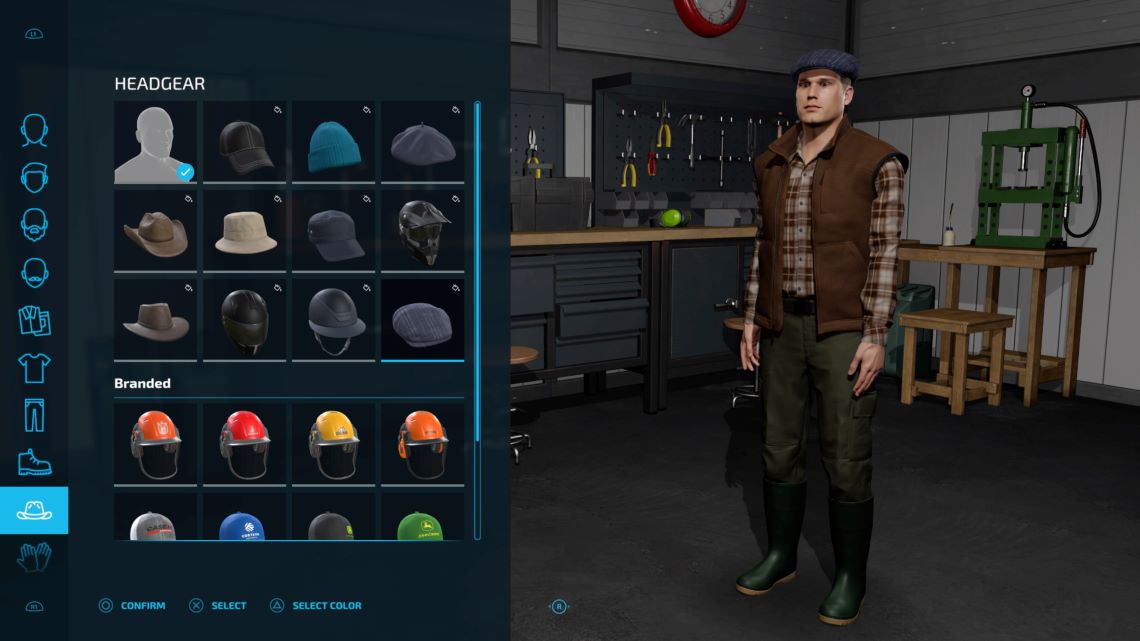
However, if you stick with it, Farming Simulator provides a surprisingly deep and interesting experience. Crop farming is where the game really shines. Undertaking the cyclical process of cultivating, sowing and harvesting is consistently therapeutic. AI-controlled workers can take care of these jobs – and for large farms, this is essential – but there’s nothing quite like the satisfaction of fully harvesting a field of wheat yourself. I hope you like three-point turns, though!
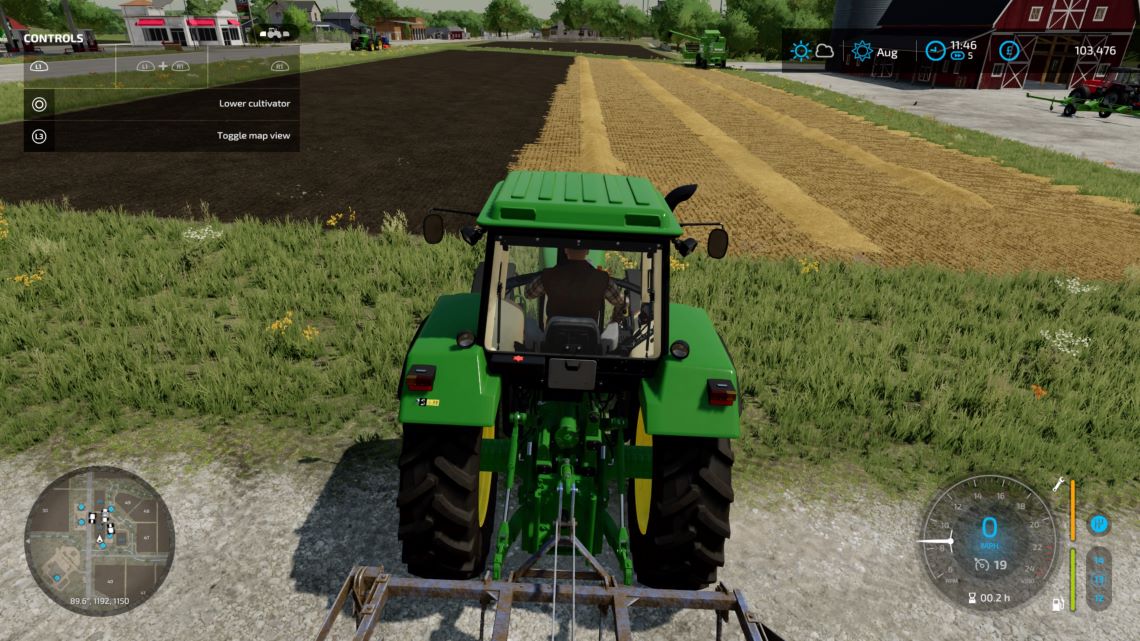
A huge variety of vehicles can be bought which specialise in farming different crops. Numerous types of fertiliser can be applied to your fields, with manure and slurry being a cost efficient option if you also own animals. Additionally, weeding is important for a superior yield, with crop sprayers available to purchase. The University of Reading has contributed to the high level of crop farming detail within the Farming Simulator franchise: read here to find out how an EIT Food project integrated precision farming into Farming Simulator 19.
The game does an excellent job of teaching you the realities of seasonal farming. Spring crops like oats and potatoes are sown in March and April, and harvested in summer or autumn. Wheat and barley are sown in autumn and harvested next summer. Seasons are shortened with each being only a few days long. The whole cycle really does feel like walking through our Year on the Farm gallery.
Finally, I have to mention the driving mechanics. Although tractors feel smooth, anything faster is a slippery nightmare – but if I’m honest this only adds to the fun. Farm produce seems essentially indestructible, so feel free to somersault your pickup truck as many times as you like!
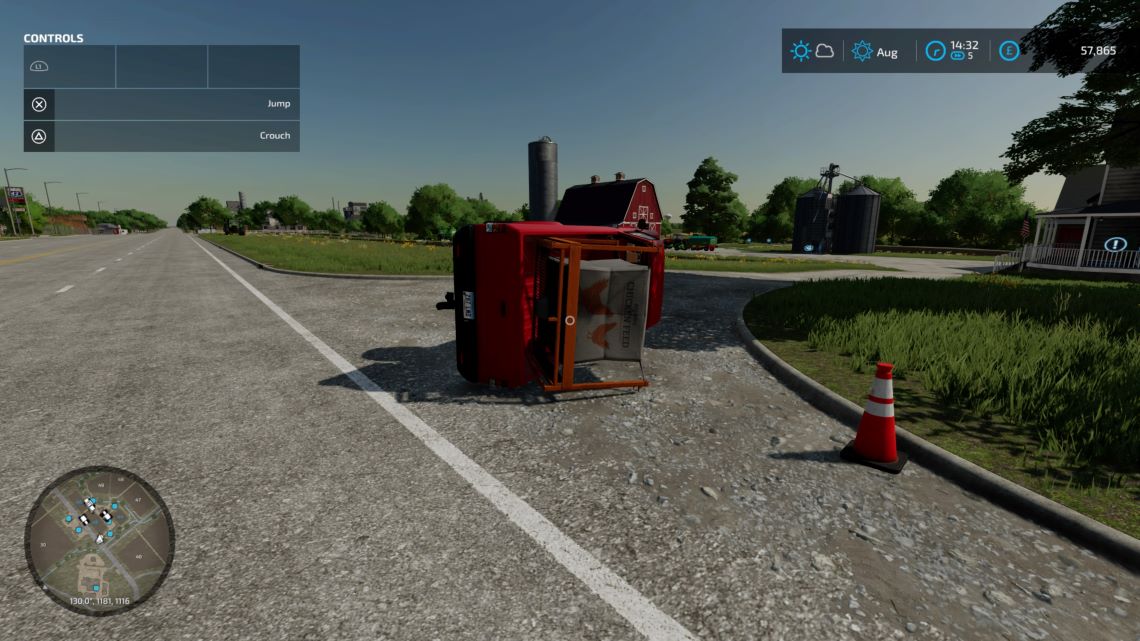
Despite being quite unintuitive, Farming Simulator 22 provides a unique gaming experience of building an agricultural empire. Sometimes, all we want at the end of a hard day is to wind down with half an hour’s virtual ploughing. No one is going to dominate you with their killstreak rewards in Farming Simulator. And that’s good enough for us.
Rating: 8/10
What my mum thought: I don’t play video games, but this looks better than Call of Whatsit.
Lawn Mowing Simulator
Fully dedicated to the art of garden maintenance, Lawn Mowing Simulator released in August 2021. Does it grass with flying colours, or does it fail to make the cut?
Upon loading into the game’s career mode, I was presented with limited customisation options. Having named my mowing entrepreneur ‘ShMERLey’, I chose her company name, logo and uniform.
As I started my first contract I immediately noticed issues with the game’s camera. Sensitivity when walking around was set far too high. Poor ShMERLey’s head was flailing around uncontrollably for a good half a minute before I was able to get her under control. I was further baffled when mounting my mower, as the camera controls were now inverted. Thankfully, all this can be edited in settings.
Perhaps it’s unfair to judge a Lawn Mowing simulator on its camera. The crucial question is: how is the mowing? Unfortunately, it’s pretty tedious. It does try to make the experience more engaging by introducing considerations such as fuel, vehicle damage and blade height. However, all of these do little to alter the gameplay; blade height is set at the start of a job and isn’t changed, and fuel can be restored by simply stepping off the mower and pressing a single button.
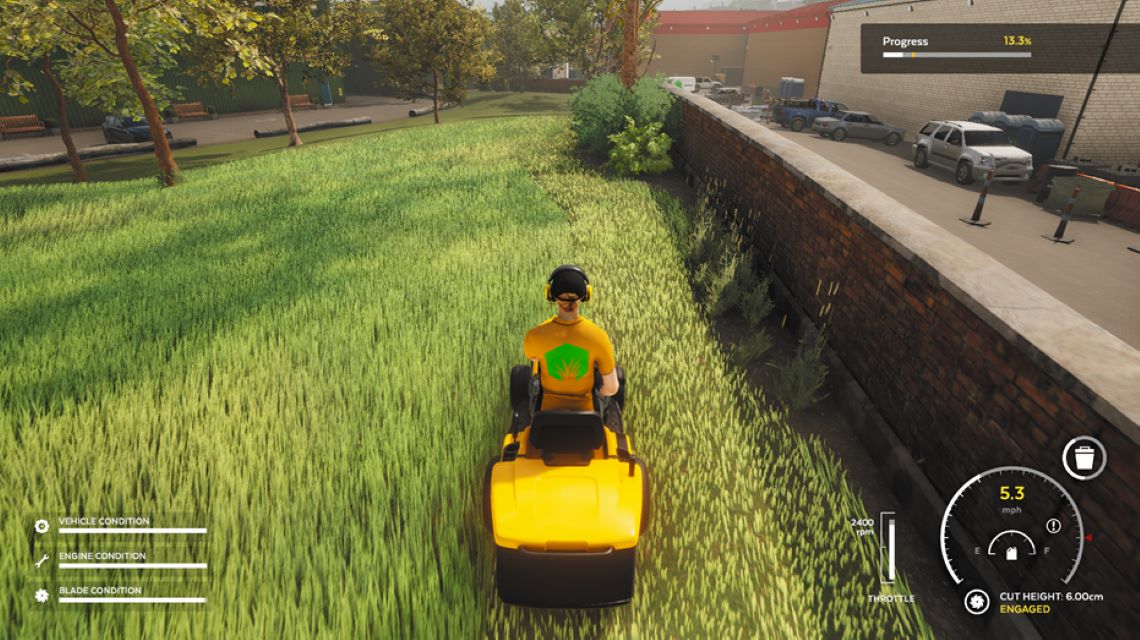
True, looking over your fully mown masterpiece at the end of the contract can be satisfying, but what isn’t satisfying is having to hunt down the very last blade of grass needed to complete the job. Likewise, seeing your lawn mowing business expand can also be a fulfilling objective, but the requirement to mow and mow for hours on end to achieve this isn’t worth it. That’s the underlying issue with Lawn Mowing Simulator. There’s really only one activity, and that activity isn’t very fun. I actually preferred cutting grass in Farming Simulator, which has so much more to offer besides.
Some of the game’s Steam reviews also reveal that it disappointed a number of lawn mowing enthusiasts, with one user unsatisfied over the lack of speed cruise control and push mowers. Others shared my camera issues, to the extent that several ended up with motion sickness. In the interests of balance, there are also many positive reviews from users who found the game soothing and relaxing.
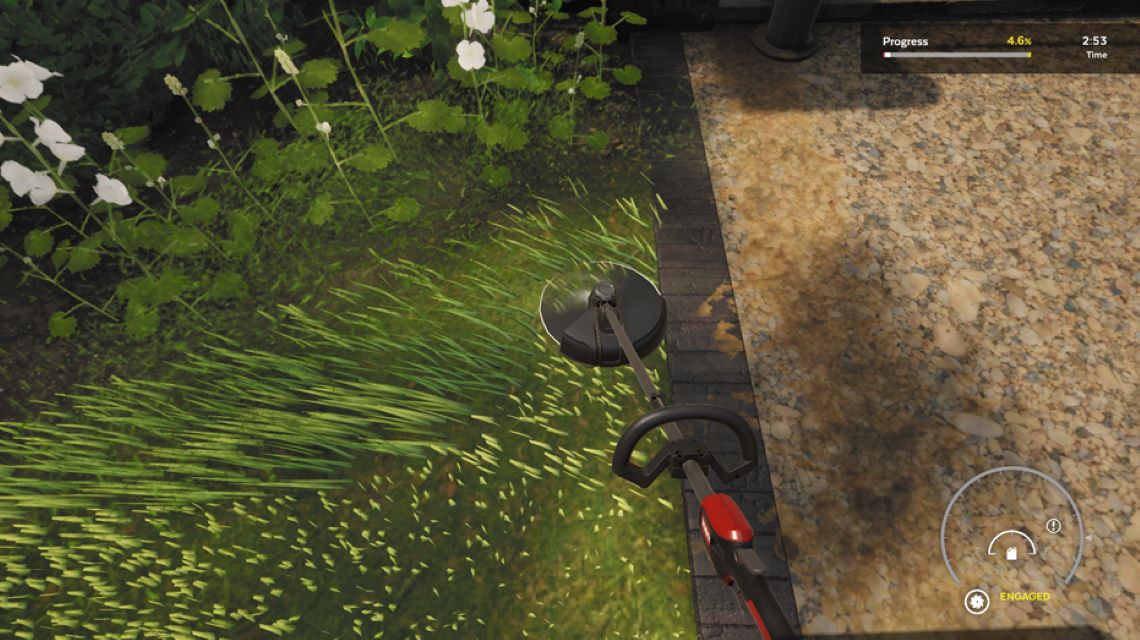
I appreciate that Lawn Mowing Simulator fills a specific niche. If you’re having fun tearing up unruly grass on your Stiga Tornado, I’m happy for you. But if you’re a more general gamer wanting to branch out into rural games, just play Farming Simulator instead. Sorry, ShMERLey.
Rating: 4/10
What my mum thought: This isn’t very stimulating, is it?
We hope you enjoyed this brief look at some rural games, past and present. Who knows, maybe you even found it informative! Be sure to visit the Museum and check out our interactive game table in the galleries, and our current community case exhibition, ‘Play Through Time’.
